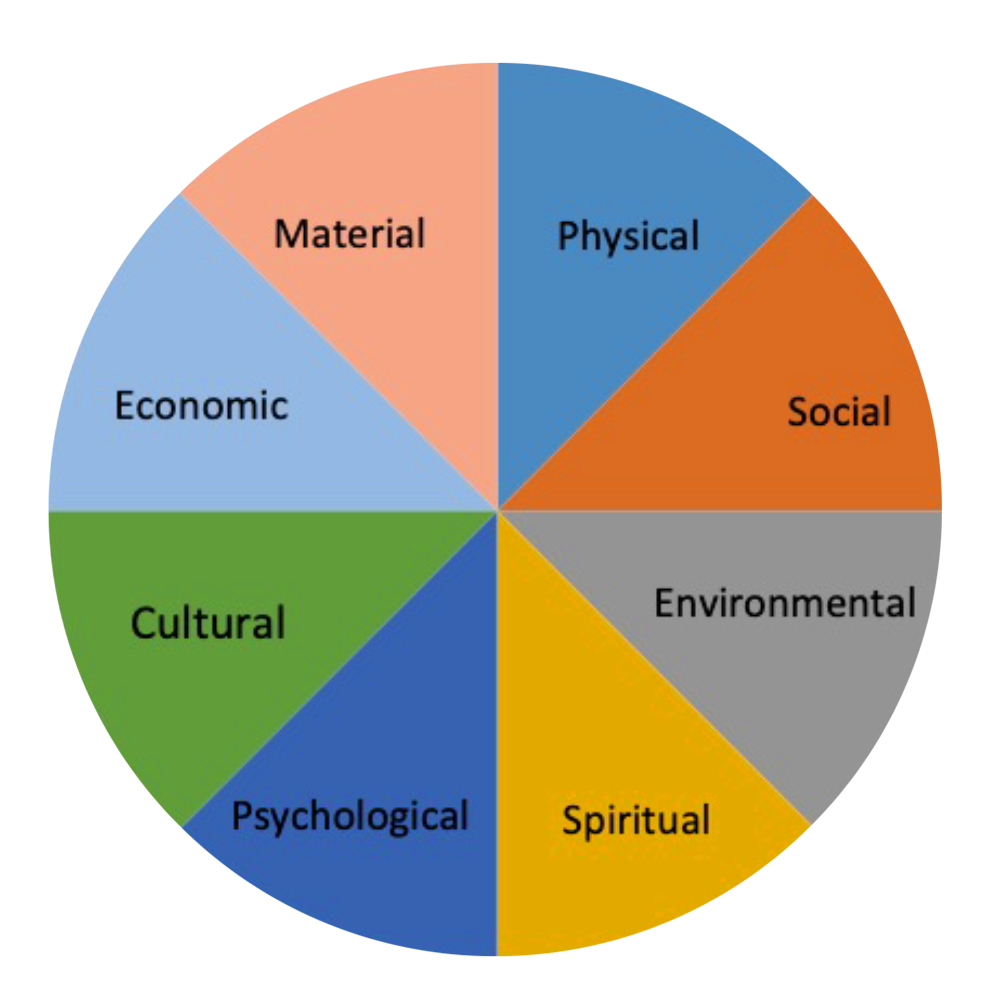our years ago, as part of a PhD degree program, I began researching whether and how people’s beliefs differ related to the concept of well-being. This professional pursuit and examination generated unexpected revelations: The experience transpired into a highly personal, transformational journey that can only be described as serendipitous. My research, intended for a broad audience, helped me grow, evolve and reflect on how my development could be meaningful to others.


The realization that I needed to work on my spiritual well-being came to me as a need to find a guide or an anchor without knowing why I felt that need. I came across a course on the teachings of yoga and Ayurveda, one of the oldest holistic healing systems, being offered in India. I went there and learned how both yoga and Ayurveda are about proactive and holistic well-being. I was intrigued that these traditional systems incorporate almost all eight components of well-being and place a strong emphasis on balancing these elements to both prevent and treat issues that manifest when the elements are out of balance, particularly health problems. What I learned in a week was the catalyst for opening my heart on many levels, and I continued to immerse in many philosophical and practical classes offered online by the yoga institute. I also explored various other systems of holistic healing, including Family Constellation Therapy, which brought a whole new dimension to my understanding of well-being. This type of therapy goes beyond the individual to examine our place in generational, community and other social structures to assist with issues in personal health and relationships.
Immersing myself in different teachings and practices added clarity to further deepen my research work. As I continued to read different literature for my research, I continued to open up and to interact with new and sometimes opposing worldviews.
The systems view of well-being is what allows for the ability to take all eight components into consideration when making decisions. This is not to say that all components weigh equally in all situations, but that all of them should be considered to ensure that they aren’t over-or underemphasized. For example, if I only focused on philosophical teachings now that I’ve become more self-aware and did not take care of my economic or material well-being, that would be detrimental to my overall well-being. It’s about having constant awareness to ensure harmony between each component.
I believe that I am now living my own research and becoming more aware of what holistic well-being means to me, my community and the whole world. Most research participants mentioned that they seldom pause and reflect on well-being despite it being so fundamental and personally foundational. Hence, I invite you to take some time and reflect on these questions and see how such reflection might change your worldview:
- How do you understand well-being?
- Has your understanding of well-being changed over time?
- How open are you to learning about different and/or opposing perspectives? If your answer is “not very,” what stops you from being more open?
- How many well-being components do you consider in decision-making?
- Which well-being component(s) are you maximizing, and where is there room to grow?
